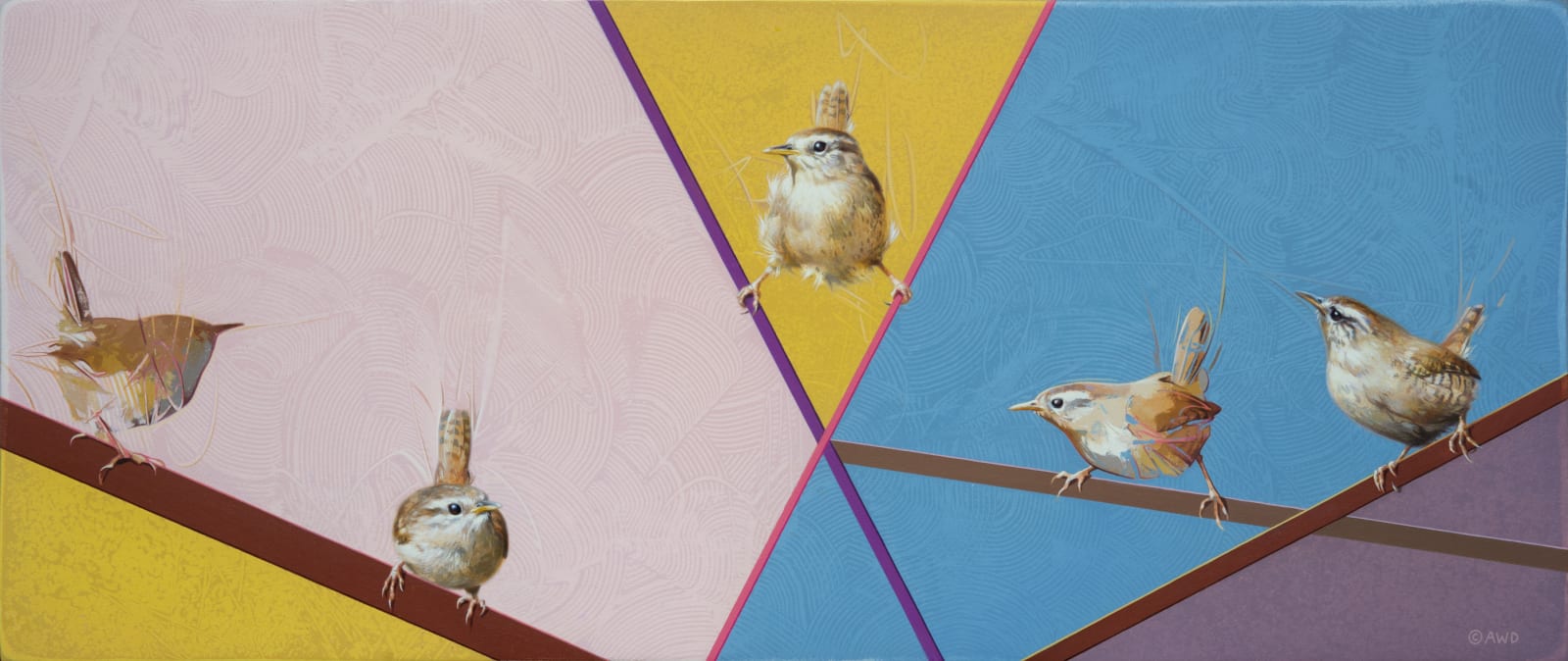Andrew Denman
7 1/2 x 18 in
31 x 58 cm framed
My “String
Theory,” series of paintings sinks its roots years back in my study of art
history in college. I have always been fascinated with minimalism, and among my
favorites historical examples are Piet Mondrian and Barnett Newman. Both
artists brilliantly illustrate the simple but undeniable power of spatial and
color harmonies, and the almost magical ability of just a few lines to create
mood and meaning.
The contrast
between illusionistic imagery and flat decorative treatments has been at the
conceptual core of my work for nearly twenty years, owing largely to my study
of modern art, so it should come as no surprise that an image of birds
essentially flying into a Barnett Newman painting came into my head like a
thunderbolt. Visually these pieces have evolved
far past the initial point of inspiration, but the initial concept is still
discernable. The magic of the String
Theory series is that simply by virtue of their proximity to more descriptive
elements like the birds, otherwise completely flat areas of color become alive
and animate in three-dimensional space. These pieces suggest the dislocation of
birds from their natural environments and their adaptiveness to the urban and
suburban habitats we have made. These colorful stripes are not meant to “describe”
anything as mundane as a fence posts, branches, or bird feeders; rather they
become their own non-objective environments, beautiful, evocative, and
otherworldly.
Here, I have
arranged a jumble of wrens, flitting about and ducking in and around a network
of intersecting and overlapping lines.
Initially, I was thinking about the dense thickets in which wrens
routinely (and maddeningly to us birders) hide, though in execution the
environment becomes far more decorative than descriptive.
